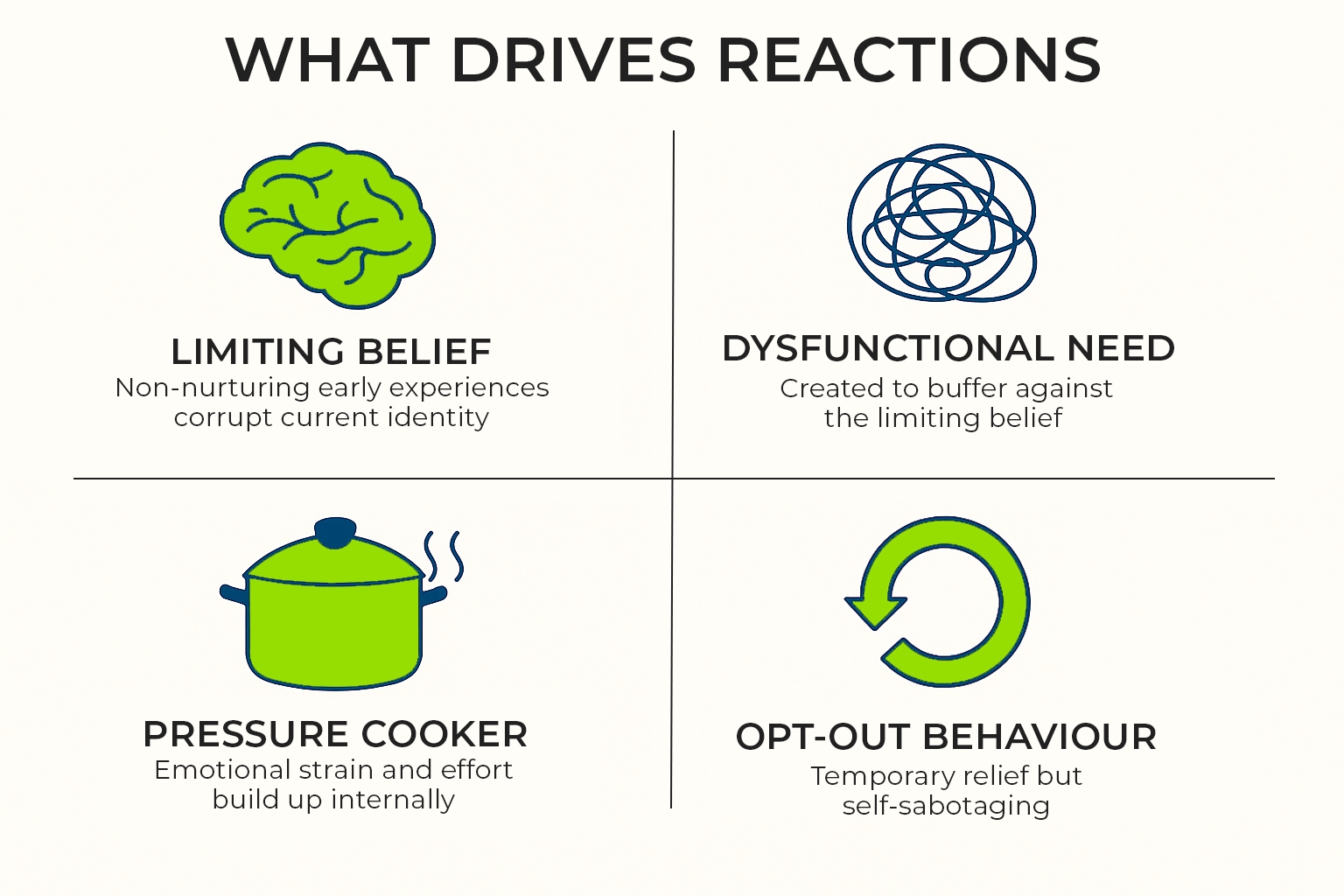Your reactions aren’t random. They’re patterned.
At ShiftGrit, Pattern Theory™ is one of the core pillars of our Identity-Level Therapy approach. It offers a structured, clinically informed framework for understanding how early experiences quietly sculpt the beliefs that drive how we think, feel, and behave in adulthood.
These patterns aren’t conscious choices. They’re automatic loops that run beneath the surface — until we dissolve them at their source.
This visual breaks down the four key components of Pattern Theory™:


The Anatomy of a Pattern
Pattern Theory™ breaks down into four interlocking parts:
- Rooted in early non-nurturing experiences, a limiting belief is a core lens through which you interpret yourself and the world. (Example: “I’m not good enough.”)
- To buffer against the pain of the limiting belief, the mind creates a compensatory drive. (Example: “I need to be perfect.”)
- Emotional tension builds internally as you strive to meet the dysfunctional need, while suppressing the discomfort of the original limiting belief.
- When the pressure becomes too great, an escape behaviour emerges — like avoidance, shutdown, or emotional outbursts. This opt-out provides short-term relief but ultimately reinforces the limiting belief.
Pattern Theory™ overview
This page defines the term at a high level.
For the full explanation of Pattern Theory™ as a diagnostic component of the ShiftGrit Core Method™, visit the Pattern Library.
From Insight to True Change
Understanding your patterns is powerful. But understanding alone doesn’t create change.
At ShiftGrit, we go further. We use a structured process of Enriched Intake, Pattern Mapping, and Reconditioning to actively dissolve the identity-level patterns that drive unwanted emotional, cognitive, and behavioural loops.
We don’t teach you to cope with your patterns. We teach your mind to no longer generate them.
This is the ShiftGrit Core Method™:
- Systematic pattern identification
- Targeted emotional reconditioning
- Identity-level transformation that becomes automatic and self-sustaining
Core Beliefs in Pattern Theory™
Core Beliefs are the building blocks of Pattern Theory™. They grow out of Non-Nurturing Elements™ and form repeating loops that shape identity and behaviour.
FAQ
Curious about how Identity Pattern Therapy works and whether it’s the right fit for you? Here are answers to some of the most common questions we hear from new clients.
What is Pattern Theory™ in therapy?
What are examples of limiting beliefs?
How do dysfunctional needs™ develop?
Why do patterns feel so automatic?
Can you really dissolve these patterns?
Ready to see how we apply Pattern Theory™ to create lasting identity-level change?
➔ Learn about Identity Pattern Therapy here.
